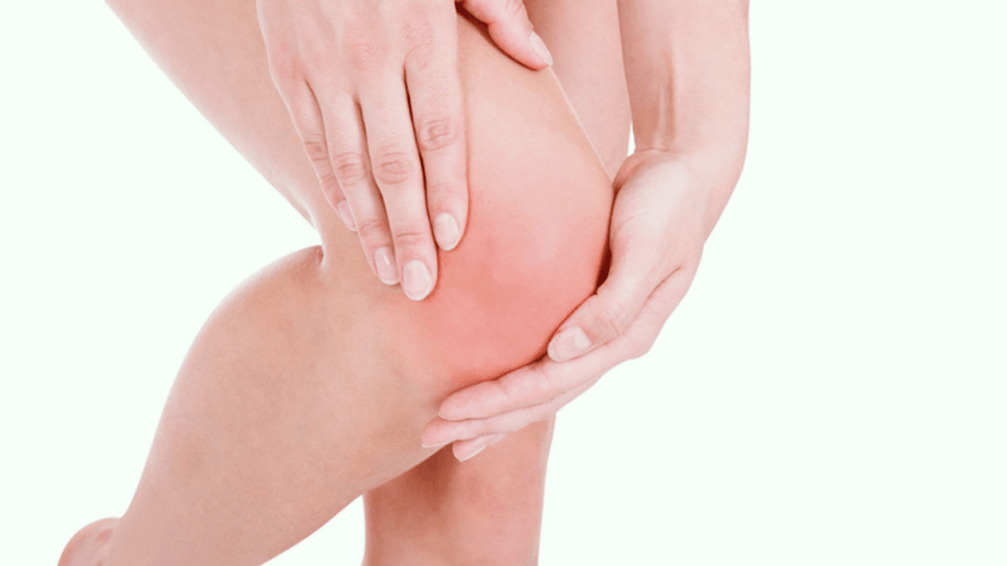With age, the cartilage tissue of the various joints is gradually deteriorated, accompanied by the destruction of the joint capsule itself and the surrounding elements. The osteoarthritis of the knee joint (also gonarthrosis) is called degeneration of the knee cartilage.The disease is first accompanied by pain, which can later lead to a significant restriction of movements and even disability.
The osteoarthritis of the knee joint (also gonarthrosis) is called degeneration of the knee cartilage.The disease is first accompanied by pain, which can later lead to a significant restriction of movements and even disability.
The joint symptoms of the knee
The main symptom of arthrosis is the rare, regular or never -ending pain of the knee.The most common symptoms are as follows:
- pain when changing the situation, moving up the stairs;
- pain at rest;
- stiffness in the knee after sleeping - first for a short time, then 30 minutes;
- Crumbling, sharp voice, pain;
- Problems of the movement of the knee joint, rarely - incapable of bending the knee;
- visual deformation of the knee joint;
- Swelling of close skin;
- Lame (a typical symptom of advanced stage).
4 degrees of pathology
The manifestation of symptoms depends largely on the stage of the disease.For example, in the first stage, the patient does not feel pain, but in stage 4 the pain is pronounced in pathology and the movements are very difficult.The development of pathology is divided to 4 degrees:
- The first is that there is no symptoms like such, but during X -rays, the doctor may detect minor differences from the normal condition.
- The second is episodic pain, which is mainly observed during physical activity while changing the situation, squatting or moving up the stairs.
- Third, the pain is severe and continuously appeared, even at rest.In this case, the walk is only possible using a reed.The X -ray explores significant narrowing of joint space, degeneration of meniscus and proliferation of bone tissue.
- Fourthly, knee movement is difficult or even impossible.X -rays show complete destruction of the cartilage, sometimes the bones begin to merge.
Important!Even if you experience casual pain in the knee joint, consult a doctor and get X -rays.If the disease is detected early, the chances of healing are much higher.
Diagnosis of the disease: Where to go
For diagnosis, the patient turns to the therapist and then turns to an orthopedic, rheumatologist, spinal doctor or kininesiotherapist (depending on the direction).Diagnosis includes interviews, patient examination and implementation of many procedures:
- General blood and urine analysis;
- X -ray;
- Computer tomography;
- MRI;
- Ultrasound for studying the joint capsules of the knee and adjacent structures - muscle tissues, tendons -;
- common puncture (fluid collection analysis);
- Arthroscopy (inserting a small camera into the joint for accurate diagnosis).
Treatment of the joint joint of the knee joint
The treatment process is prescribed by a doctor.If the disease is not advanced, conservative treatment (without surgery) can be used.In this case, the drugs and physiotherapy are indicated.As a general rule, treatment is complex - the patient will use medications from different groups:
- Non-steroidal anti-inflammatory drugs for pain relief-dichlofenac, ibuprofen and drugs based on them;
- Hormonal drugs (corticosteroid group) - used for the effectiveness of other drugs;
- Malispazmodics - "Tolperisone" and its analogues;
- Chondroprotectors -drugs that stimulate cartilage restoration: "chondroitin sulfate", "glucosamine" combination and separately;
- Medicines that stimulate blood saturation with oxygen, nutrients and improve bloodstream ("pentoxifillin", "nicotinic acid" and others).
The drugs are used in various forms - from the outside (ointments, gels), orally (tablets), intramuscularly and intraarticular (injections).Together with medicines, if necessary, your doctor may prescribe the following procedures:
- shock wave therapy;
- magnetic therapy;
- laser therapy;
- Electrotherapy;
- phonophoresis;
- Ozone therapy.
In extreme cases, when the use of drugs and procedures for a long time does not provide the desired effect, and if the disease is severely advanced, treatment is only possible through surgery.Many types of operations possible:
- Osteotomy - the surgeon cuts a bone, changes its angle to reduce the full load of the knee joint;
- Arthrodesis - In this case, the doctor tightens the bones, which eliminates mobility and reduces the pain that resulted in a person to rely on the feet;
- Endoprostetics - Full replacement of the affected joint with prosthesis.



















